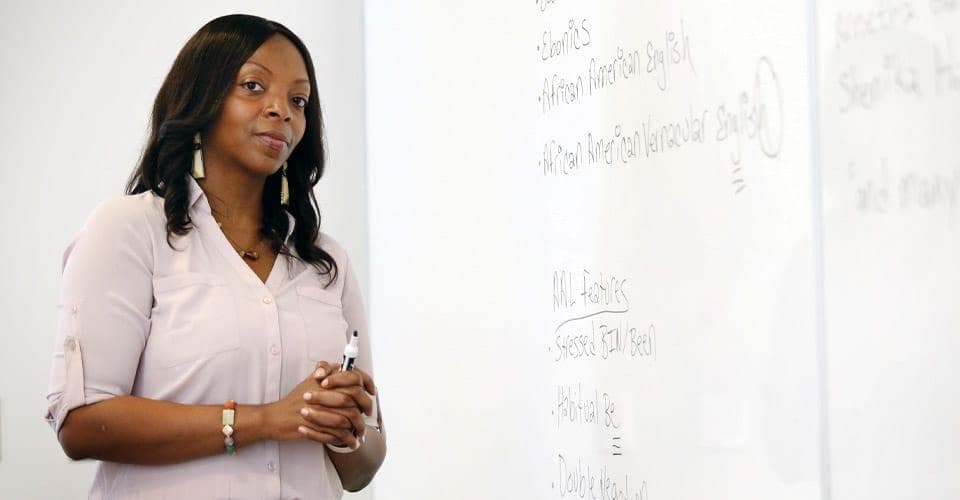‘It’s Not an Error, It’s a Language’
Researcher Aims to Teach Teachers About African American Language, and Liberate Student Writers
By Chris Carroll | Photo by John T. ConsoliWhile a master’s student at Eastern Michigan University, Shenika Hankerson was asked to fix her writing errors and turn an assignment back in. The only problem was, what errors?
She couldn’t see them, and when she showed the paper to family members, they couldn’t either. It was almost as if she and the instructor were communicating in different languages—and today, the assistant professor (pictured above) in the College of Education’s Applied Linguistics and Language Education program knows that they were.
Rather than turning her off to higher education, or causing her to meekly endeavor to stamp out whatever offended the instructor, the incident sparked Hankerson’s research, which explores how writing is taught to African American Language (AAL) speakers in universities and community colleges, and studies whether antiracist approaches can inspire learning.
She’s convinced, based on the work of many scholars, that Black students have a right to their mother tongue. What Hankerson calls AAL, also known as Black English or Ebonics, has structural features that reach back to the languages of enslaved Africans shipped to North America. An estimated 80% to 90% of African Americans at times use some form of the language, she says, which evolved—and continues to develop—to suit users’ needs.
“It’s not an error, it’s a language,” she says. “If we’re going to have inclusive, democratic and socially just classrooms, educators must make an effort to educate themselves on what AAL is ... to integrate racial and linguistic equity as a core mission in their curriculum.”
Such a curriculum is inclusive, she says, allowing students to stretch their writing wings using their own language, while also using academic language to help students work effectively in the classroom.
Hankerson directs Project RISE (Research Institute for Scholars in Education), which provides underrepresented undergrads from local universities with paid research and career development training in education. Such work is vital at the University of Maryland, set in an African American-majority county, says Jeff MacSwan, professor and head of the Applied Linguistics and Language Education program.
“It’s the university’s job to relate to and serve the community in which it’s situated,” he says.
Students don’t necessarily have to flip a switch; through “code meshing,” AAL speakers can introduce elements of their language across language barriers, enriching English in general while ensuring mutual comprehension.
“We’re working on equity, which means honoring every language, including AAL,” Hankerson says.
0 Comments
Leave a Reply
* indicates a required field

